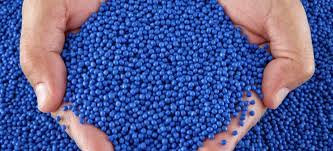Thermoplastic elastomers (TPEs), also known as thermoplastic rubbers, are a class of copolymers or a physical mix of polymers that have both thermoplastic and elastomeric properties. They can be easily re-processed and recycled like conventional thermoplastics however they have unique elastomeric properties like rubber.
History and Types of Thermoplastic Elastomers
The concept and development of thermoplastic elastomers started in the late 1950s and early 1960s with the discovery of styrenic block copolymers by Shell Chemical. The three main types of TPEs are:
- Styrenic Block Copolymers (SBCs):
SBCs are thermoplastic elastomers composed of blocks of polystyrene and rubbery polybutadiene or polyisoprene linked together. They include styrene-butadiene-styrene (SBS) and styrene-isoprene-styrene (SIS) block copolymers. SBCs offer enhanced processability, strength and flexibility.
- Thermoplastic Polyolefins (TPOs):
TPOs are a physical blend of polyolefin such as polyethylene or polypropylene and an elastomer like EPR or EPDM. They are the most widely used TPE in applications like automotive interior parts.
- Thermoplastic Polyurethanes (TPUs):
TPUs are composed of long chain diisocyanate, polyols and chain extenders. They exhibit properties like good abrasion resistance, flexibility and elasticity. TPUs find applications in wear-resistant hoses, cables and medical devices.
Uses and Applications of Thermoplastic Elastomers
Coherent Market Insights explains some major applications of thermoplastic elastomers in Thermoplastic Elastomers Market as followed:
Automotive Interior and Exterior Parts: TPOs and TPUs are used in automotive bumpers, grills, seals, hoses, cables, window seals etc. due to their flexibility, toughness and weather resistance.
Footwear: SBCs and TPUs are used in shoes like sport shoes for midsoles, outsoles, fashion shoes, winter boots for their flexibility and comfort.
Medical Devices: Biostable TPUs are used for catheters, tubing, implants due to their elasticity, softness, fatigue resistance and biocompatibility.
Sports and Recreation: SBCs are blended with PVC to make flexible foams for shoes, knee braces, playground flooring for their excellent rebound, resilience and soft touch.
Construction: Roofing membranes, window profiles, gaskets, sealants use TPOs and TPUs for durability, strength and weatherability.
Consumer Goods: TPUs are used in toys, small appliances, wire and cable jackets due to their abrasion resistance, durability and elasticity.
Thus, the versatile properties of thermoplastic elastomers allow their usage across a wide range of industries replacing conventional rubbers in several applications.
Advantages of Thermoplastic Elastomers
Some key advantages of thermoplastic elastomers over thermoset rubbers are:
Reprocessability: TPEs can be easily remelted, reshaped and recycled like ordinary thermoplastics by simply heating and cooling.
No Vulcanization: Unlike rubbers, TPEs do not require any vulcanization process and hence no associated issues like molds, release agents, etc.
Fast Processing: TPEs can be easily fabricated using high speed manufacturing techniques like injection and blow molding.
Vibration Damping: TPEs provide excellent vibration damping properties suitable for automotive mounts, hoses, medical tubing etc.
Wide Range of Properties: Different types and grades of TPEs offer a wide range of physical properties based on end use requirements.
Improved Abrasion Resistance: As compared to rubbers, certain TPEs like TPUs offer enhanced abrasion resistance suitable for wear applications.
Thus, the ease of processing, recycling, design flexibility and improved properties make thermoplastic elastomers a viable alternative to thermoset rubbers in multiple applications.
Market Outlook
The global thermoplastic elastomers market is projected to witness steady growth going forward due rising usage across automotive, construction and consumer goods industries according to a research report published by Coherent Market Insights. Asia Pacific dominated the market in 2019 mainly driven by the rise in industrial and automotive production in China and India. Factors such as increasing vehicle production, growing construction activities and expanding footwear and medical sectors will fuel the demand for thermoplastic elastomers across major economies. For more comprehensive analysis on regional market trends, growth drivers and future projections refer Coherent Market Insights research report.

